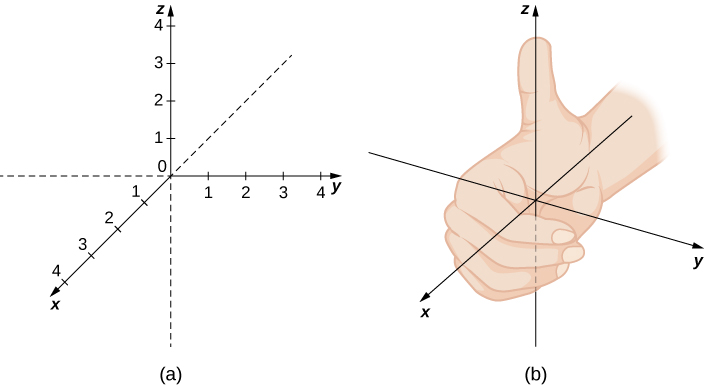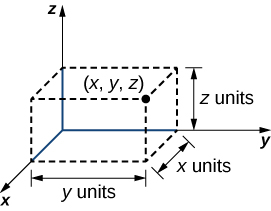| << Chapter < Page | Chapter >> Page > |
Vectors are useful tools for solving two-dimensional problems. Life, however, happens in three dimensions. To expand the use of vectors to more realistic applications, it is necessary to create a framework for describing three-dimensional space. For example, although a two-dimensional map is a useful tool for navigating from one place to another, in some cases the topography of the land is important. Does your planned route go through the mountains? Do you have to cross a river? To appreciate fully the impact of these geographic features, you must use three dimensions. This section presents a natural extension of the two-dimensional Cartesian coordinate plane into three dimensions.
As we have learned, the two-dimensional rectangular coordinate system contains two perpendicular axes: the horizontal x -axis and the vertical y -axis. We can add a third dimension, the z -axis, which is perpendicular to both the x -axis and the y -axis. We call this system the three-dimensional rectangular coordinate system. It represents the three dimensions we encounter in real life.
The three-dimensional rectangular coordinate system consists of three perpendicular axes: the x -axis, the y -axis, and the z -axis. Because each axis is a number line representing all real numbers in the three-dimensional system is often denoted by
In [link] (a), the positive z -axis is shown above the plane containing the x - and y -axes. The positive x -axis appears to the left and the positive y -axis is to the right. A natural question to ask is: How was arrangement determined? The system displayed follows the right-hand rule . If we take our right hand and align the fingers with the positive x -axis, then curl the fingers so they point in the direction of the positive y -axis, our thumb points in the direction of the positive z -axis. In this text, we always work with coordinate systems set up in accordance with the right-hand rule. Some systems do follow a left-hand rule, but the right-hand rule is considered the standard representation.

In two dimensions, we describe a point in the plane with the coordinates Each coordinate describes how the point aligns with the corresponding axis. In three dimensions, a new coordinate, is appended to indicate alignment with the z -axis: A point in space is identified by all three coordinates ( [link] ). To plot the point go x units along the x -axis, then units in the direction of the y -axis, then units in the direction of the z -axis.


Notification Switch
Would you like to follow the 'Calculus volume 3' conversation and receive update notifications?